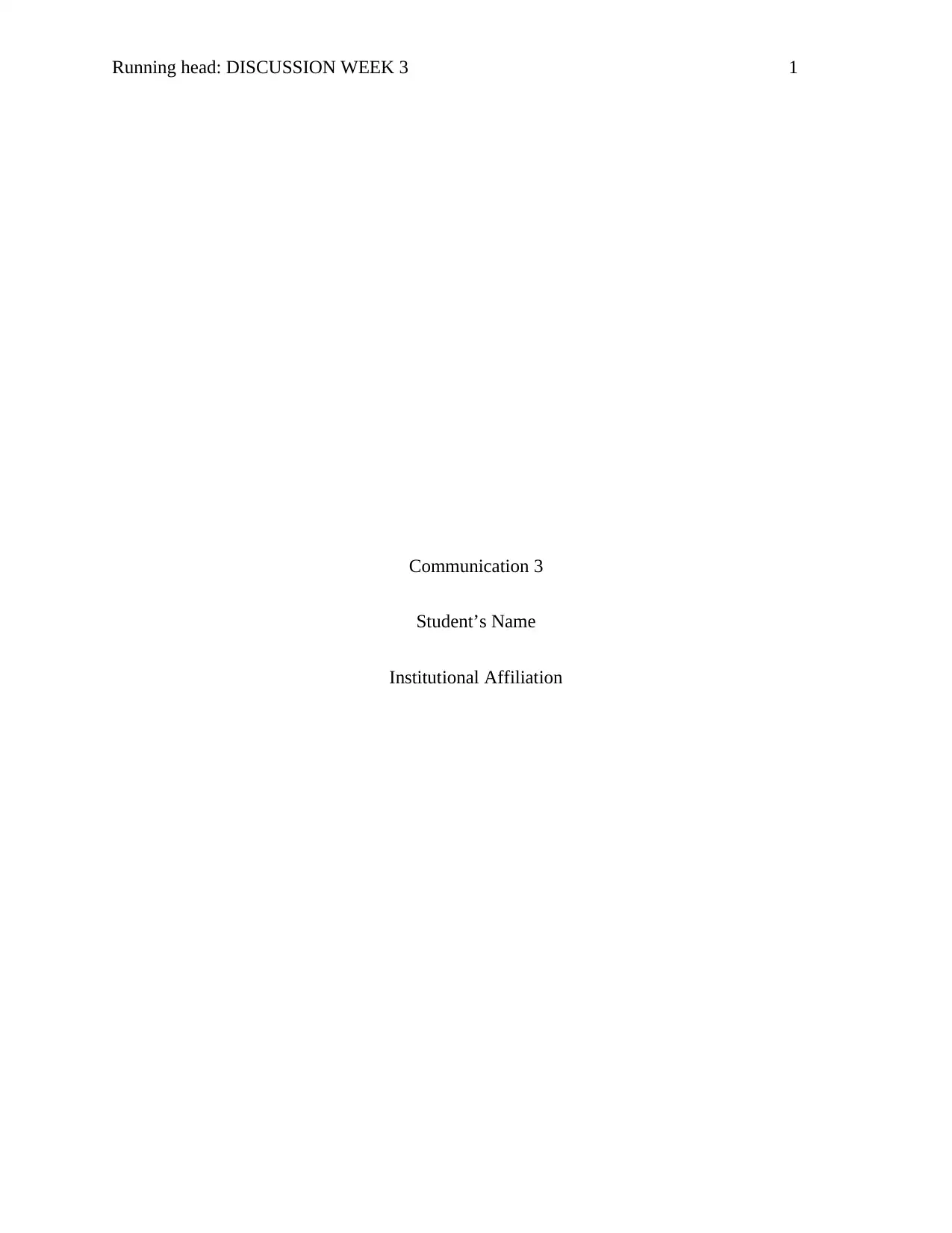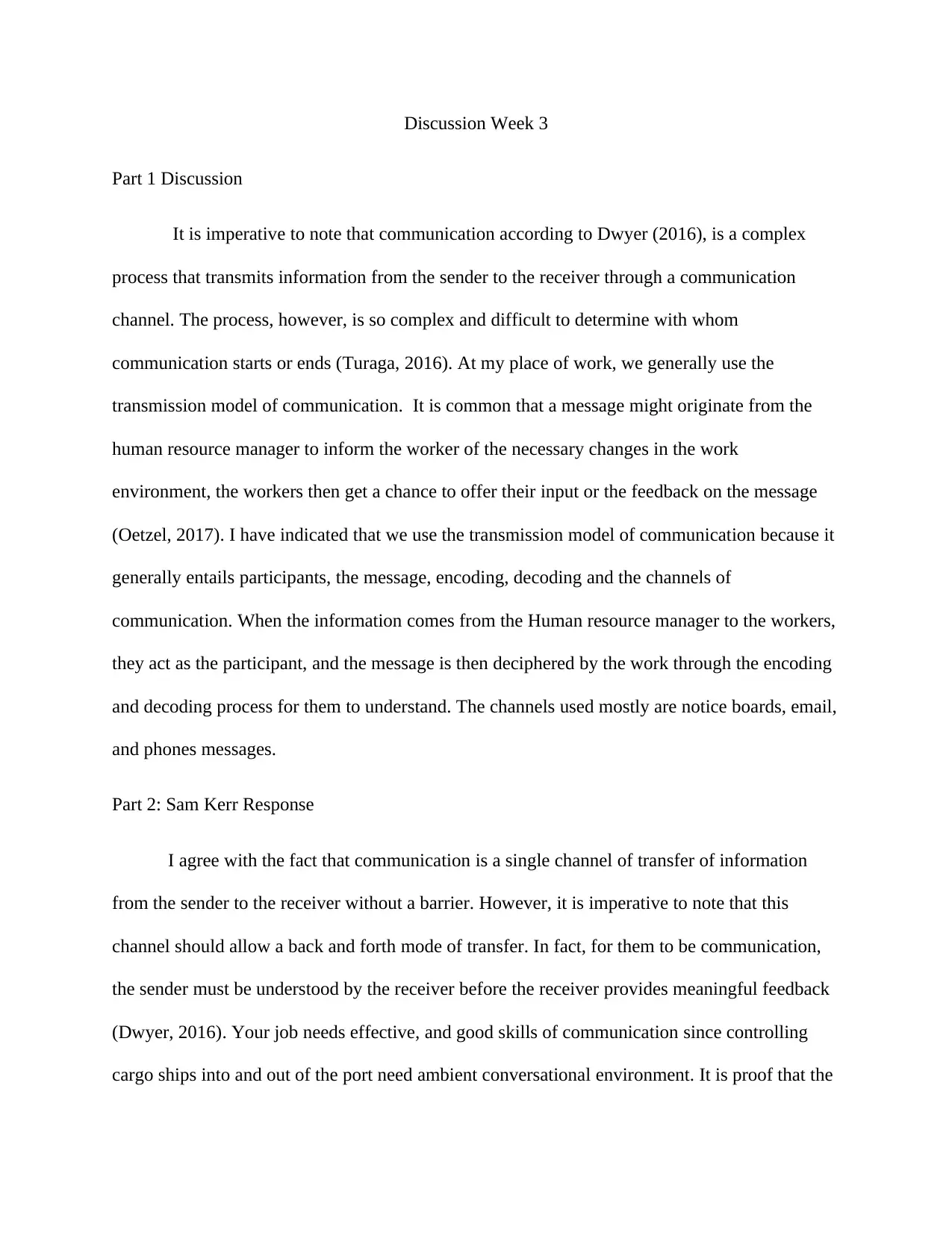Leadership and Communication: Week 3 Discussion on Models
VerifiedAdded on 2022/10/05
|4
|774
|494
Discussion Board Post
AI Summary
This discussion board post from a student explores communication models, specifically focusing on the transmission and process models as described in the Dwyer textbook. The student analyzes how these models apply in their workplace, highlighting the roles of sender, receiver, encoding, decoding, and communication channels. The post includes a response to a peer's perspective on communication, emphasizing the importance of feedback and the challenges posed by communication barriers. Another peer response is also addressed, discussing the process model and its application in business settings. The student provides research to support their arguments and engages critically with their peers' ideas, referencing relevant literature to strengthen the discussion. The discussion also touches upon the complexities of communication and the need for effective communication strategies in the workplace to enhance productivity and achieve organizational goals. The references include the Dwyer textbook and other scholarly sources.
1 out of 4











![[object Object]](/_next/static/media/star-bottom.7253800d.svg)